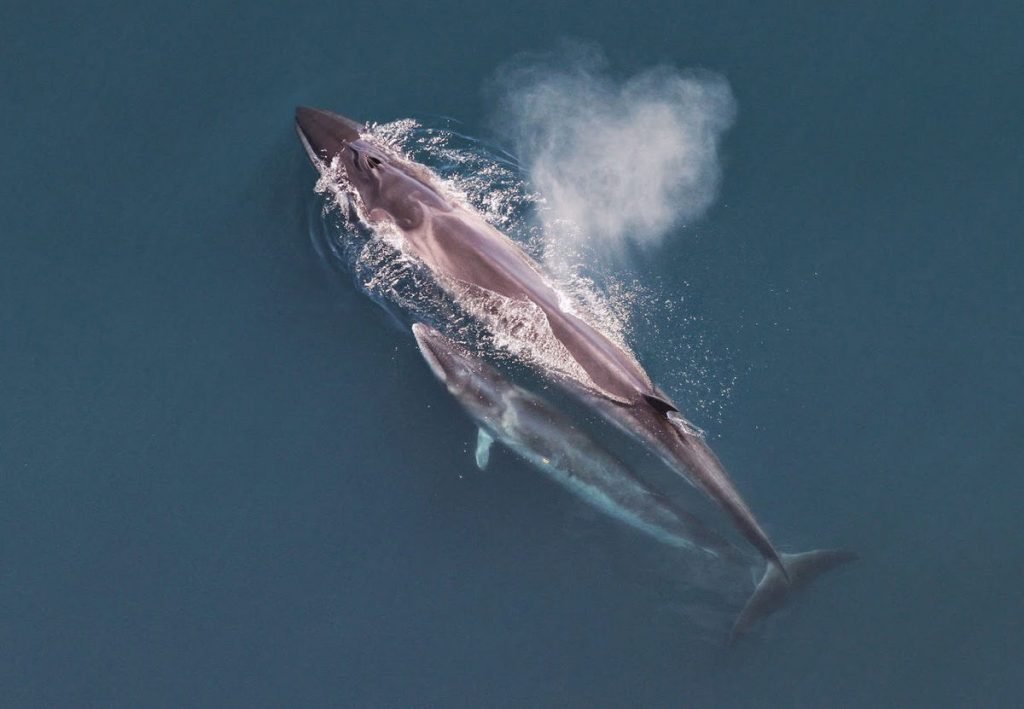
STATUS
Federal status: Endangered
POPULATION TREND
(+) Increasing
RESTORATION
Difficult
FAMILY
Balaenopteridae, the largest family of baleen whales
RANGE
Subtropical, temperate, and subpolar waters around the world; distinct sub-populations occur in the northern and southern hemispheres
Appearance
Sei whale are generally between 15-20 meters long. They have dark gray coloring with light gray or white ventral markings, and often have distinguishable scarring from wounds caused by shark attacks.
Habitat
This species generally prefers deep offshore waters. Unlike most whales, which may arch their backs or lift their flukes before diving, sei whales simply sink deeper into the water, leaving a “fluke print” behind on the surface. Sei whales may dive for 5-20 minutes in order to feed. On average, they consume 2,000 pounds of food–including plankton, small fish, cephalopods (e.g. squid)–per day.
Threats
Sei whale population levels were greatly damaged by commercial whaling, particularly in the 19th and 20th centuries. They were highly sought after for their meat and oil, and an estimated 300,000 whales were killed. Today, vessel strikes and entanglement pose the biggest threat to sei whales. Plastics are also being found in the stomachs of sei whales at in increasing rate.
Conservation
Commercial whaling for the sei whale did not end until 1980, though some whaling still continues in Japan and Iceland. Global organizations have attempted to rescue this endangered species by developing regulations and management plans to stimulate safe fishing practices and reduce the threat that fishing poses in international waters.
Where can you spot it?
Because of its preference for deeper, offshore waters, it is uncommon to spot sei whales in the wild.